When it comes to asbestos exposure, many people are unaware of the serious health risks involved, their legal rights, or the steps they can take to seek compensation. Lakewood Asbestos Legal Questions often arise, as Lakewood, like many cities, has seen a history of asbestos use in older buildings and industries, making it crucial for residents and workers to be informed about their rights.
This blog post aims to provide a detailed, easy-to-understand guide to help you navigate Lakewood asbestos claims, understand your legal options, and take the right steps if you or a loved one has been affected by asbestos-related illnesses such as mesothelioma or lung cancer.
Understanding Asbestos and Its Health Risks
Asbestos is a naturally occurring mineral once widely used in construction for its strength and heat resistance. It was commonly found in insulation, floor tiles, roofing shingles, and other building materials. Many older buildings, especially those built before the 1980s, still contain asbestos.
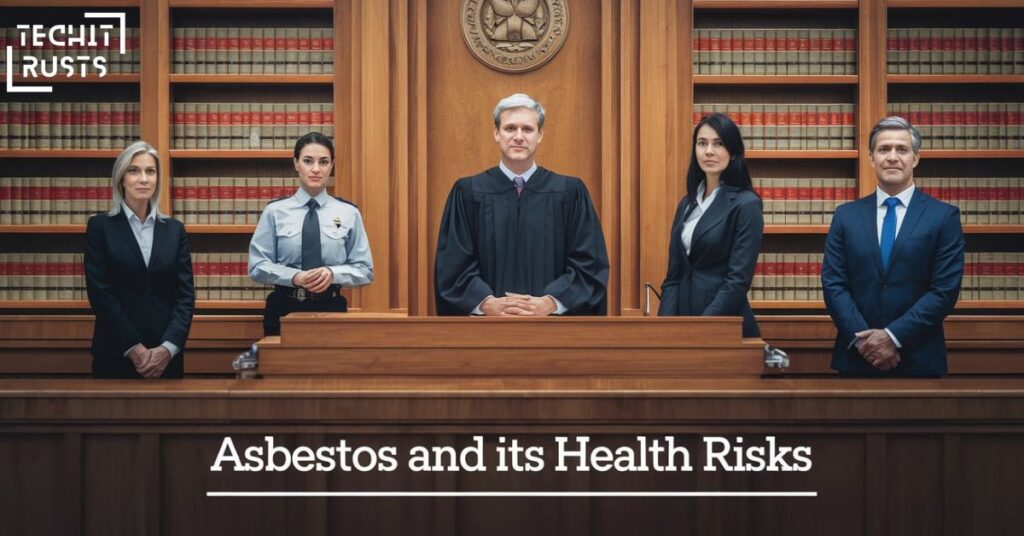
When asbestos materials are disturbed, tiny fibers can become airborne and easily inhaled. These fibers can get lodged in the lungs, leading to serious health problems over time. Despite its usefulness in construction, asbestos is now recognized as highly dangerous. Exposure to asbestos can cause severe illnesses, including lung cancer, asbestosis, and mesothelioma, a rare but aggressive cancer.
These diseases often develop slowly, sometimes taking 20 to 50 years after exposure for symptoms to appear. The long delay makes it difficult to detect the problem early. Symptoms include shortness of breath, chest pain, and persistent coughing. Since asbestos-related diseases can be life-threatening, it’s important to avoid exposure and be aware of potential risks, especially during renovations or demolitions of old buildings.
What Is Asbestos?
Asbestos is a naturally occurring mineral that was widely used in construction, manufacturing, and other industries due to its heat-resistant properties. It’s a fibrous material that was once prized for its durability and insulation capabilities. However, over time, it became clear that asbestos fibers, when inhaled, could cause serious health issues.
These tiny fibers, which can become airborne when disturbed, are inhaled into the lungs and can remain there for years, eventually leading to asbestos-related illnesses.
Common Uses of Asbestos:
- Construction Materials: Insulation, floor tiles, roofing shingles, cement products
- Automotive Parts: Brake pads, clutches
- Shipbuilding: Insulation for boilers and pipes
- Textiles: Fireproof clothing, blankets
Health Risks Associated With Asbestos Exposure
Exposure to asbestos can lead to serious, often fatal health conditions. These illnesses have long latency periods, meaning symptoms may not appear for 20 to 50 years after exposure.
Asbestos-Related Illnesses Include:
- Mesothelioma: A rare cancer of the lining of the lungs, abdomen, or heart, almost exclusively caused by asbestos exposure.
- Lung Cancer: Prolonged asbestos exposure increases the risk of lung cancer, especially in individuals who smoke.
- Asbestosis: A chronic lung disease caused by inhaling asbestos fibers, leading to scarring of lung tissue.
- Pleural Effusions and Plaques: These are non-cancerous conditions that can still lead to severe respiratory issues.
Symptoms to Watch For:
- Persistent coughing
- Shortness of breath
- Chest pain
- Unexplained weight loss
- Fatigue
Common Sources of Asbestos Exposure in Lakewood
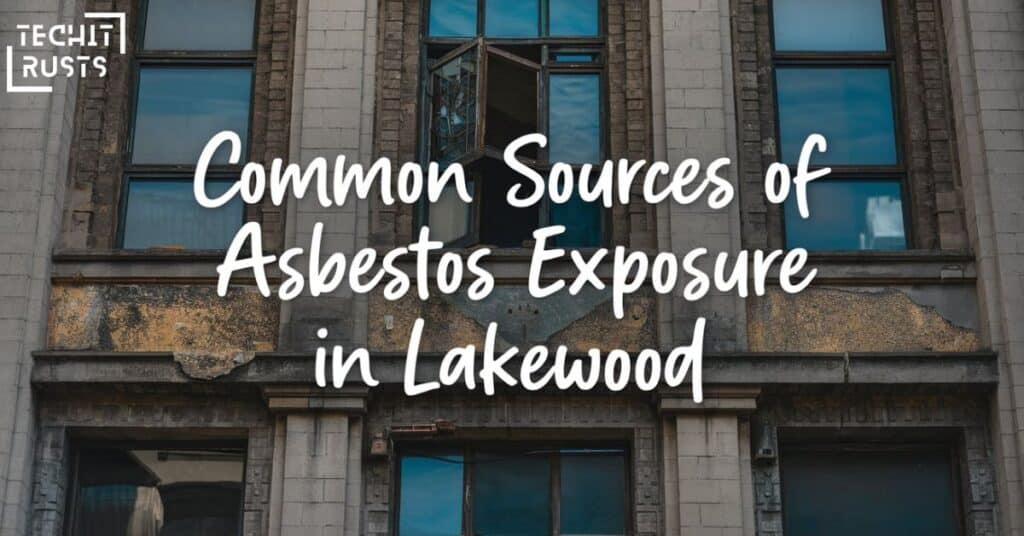
While asbestos is no longer widely used, its legacy remains. Many Lakewood residents and workers may still be at risk due to its presence in older structures and specific industries.
Old Buildings and Renovations
Lakewood has a rich history, with many buildings constructed before the 1980s. These older structures, particularly schools, hospitals, and residential homes, may contain asbestos in the insulation, floor tiles, or roofing materials. Renovation or demolition work can disturb asbestos, releasing fibers into the air and posing a risk to workers and residents.
Occupational Asbestos Exposure
Certain jobs carry a higher risk of exposure to asbestos. In Lakewood, industries like construction, shipbuilding, and manufacturing have historically been associated with occupational asbestos exposure. Workers who handled asbestos-containing products or worked in environments where asbestos was prevalent are at higher risk.
High-Risk Occupations:
- Construction workers
- Electricians and HVAC technicians
- Shipyard workers
- Insulation manufacturers
Secondary Asbestos Exposure (Take-Home Exposure)
Secondary asbestos exposure, also known as take-home asbestos exposure, occurs when someone is indirectly exposed to asbestos through contact with a person who has worked in an asbestos-contaminated environment. For example, family members of workers may be exposed when asbestos fibers are carried home on clothing, hair, or tools.
Legal Rights of Asbestos Victims in Lakewood
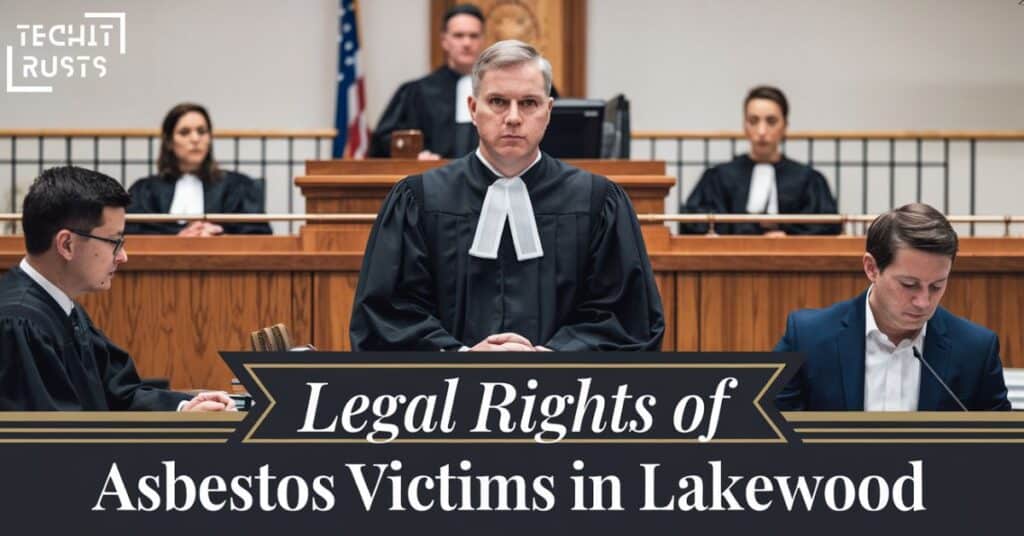
When it comes to asbestos exposure, it’s essential to understand your legal rights. The legal rights of asbestos victims vary depending on the circumstances of exposure, the illness involved, and the responsible parties. Victims of asbestos exposure in Lakewood have the right to seek compensation for their injuries and losses.
Understanding Liability and Negligence in Asbestos Exposure
In asbestos cases, the concept of negligence plays a crucial role. Employers, manufacturers, and property owners can be held responsible for failing to protect individuals from asbestos exposure. To establish negligence, it must be shown that these parties knew (or should have known) about the dangers of asbestos and failed to take appropriate precautions.
Key Factors in Proving Negligence:
- Failure to warn employees or tenants about the presence of asbestos
- Failure to follow safety protocols during renovation or construction projects
- Selling or distributing asbestos-containing products without proper warnings
Eligibility for Filing an Asbestos Lawsuit
Victims of asbestos-related illnesses or their surviving family members may be eligible to file a lawsuit against the responsible parties. To determine eligibility, the following factors are considered:
- Proof of asbestos exposure: Demonstrating when and where the exposure occurred.
- Diagnosis: A confirmed medical diagnosis of an asbestos-related illness.
- Causation: Establishing that the illness was caused by asbestos exposure.
Family Members’ Rights:
Family members of victims who have passed away due to asbestos-related diseases may be eligible to file wrongful death claims.
Compensation Options for Asbestos Victims
There are several avenues through which asbestos victims in Lakewood can seek compensation.
Types of Compensation:
- Medical Costs: Expenses related to diagnosis, treatment, and ongoing care.
- Lost Wages: Compensation for time missed from work due to illness.
- Pain and Suffering: Compensation for physical pain, emotional distress, and loss of quality of life.
- Wrongful Death: Compensation for family members of individuals who died as a result of asbestos-related illnesses.
Types of Compensation Available
Victims of asbestos exposure can receive several types of compensation to help with medical costs and other damages. One common form of compensation covers medical expenses, including treatments, surgeries, medications, and ongoing care related to illnesses like mesothelioma or lung cancer.
Victims may also receive compensation for lost wages if their illness prevents them from working. This helps replace the income lost due to their inability to continue their job. In addition to these, victims can be compensated for pain and suffering, which accounts for the physical and emotional stress caused by their illness. Asbestos trust funds are another source of compensation.
These were established by companies that used asbestos, allowing victims to claim money without going through a lengthy lawsuit. Lastly, workers’ compensation or disability benefits might be available for those exposed to asbestos while on the job, helping cover expenses and lost income due to disability from the disease.
Asbestos Trust Funds
One of the most significant sources of compensation for asbestos victims is asbestos trust funds. Many companies that used asbestos filed for bankruptcy and were required to establish trust funds to compensate victims. These funds allow individuals to file claims without going through a traditional lawsuit.
| Trust Fund Name | Industry | Estimated Available Funds |
| Johns-Manville Trust | Construction | $2.5 billion |
| United States Gypsum | Manufacturing | $3.9 billion |
| Owens Corning Trust | Insulation | $1.8 billion |
Workers’ Compensation and Disability Benefits
Victims exposed to asbestos in the workplace may be eligible for workers’ compensation benefits. Workers’ compensation typically covers medical expenses and a portion of lost wages. In some cases, victims may also qualify for disability benefits, such as Social Security Disability Insurance (SSDI).
Workers’ Compensation Benefits:
- Medical Coverage: Payment for treatments related to the asbestos-related illness.
- Temporary or Permanent Disability Benefits: Compensation for lost wages during illness recovery.
- Death Benefits: Payments to family members of workers who died due to asbestos exposure.
Wrongful Death Claims
Family members of deceased asbestos victims have the right to file wrongful death claims to seek compensation for the loss of their loved one. These claims cover not only medical and funeral expenses but also emotional losses, such as the loss of companionship.
Legal Process for Asbestos Claims in Lakewood
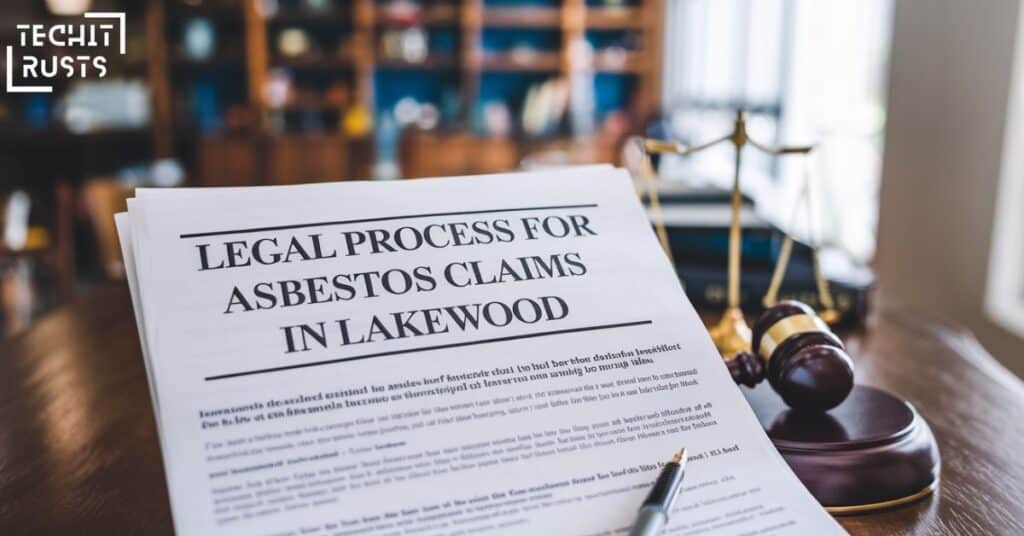
Filing an asbestos claim in Lakewood can be complex, but understanding the process can help victims take the necessary steps to secure compensation.
Steps to File a Lawsuit
Filing an asbestos lawsuit involves several key steps:
- Hiring an Experienced Attorney: The first and most critical step is securing an attorney who specializes in asbestos legal representation. These lawyers have the expertise needed to navigate the complexities of asbestos litigation.
- Gathering Proof of Asbestos Exposure: Victims will need to provide documentation of their exposure, including employment records, medical records, and witness statements.
- Filing the Complaint: Once the necessary evidence has been gathered, the attorney will file a complaint in court, outlining the claims against the responsible parties.
- Discovery Process: During discovery, both sides exchange information and evidence related to the case.
- Settlement Negotiations or Trial: Many asbestos cases are settled out of court, but if no settlement is reached, the case may go to trial.
Statute of Limitations for Asbestos Cases
Each state has a statute of limitations that determines how long victims have to file a lawsuit. In Lakewood, the statute of limitations for asbestos cases is typically two years from the date of diagnosis or, in wrongful death cases, two years from the date of death..
However, there are exceptions, especially in cases where the exposure occurred many years ago.
Challenges in Asbestos Litigation
Asbestos cases can be complicated for several reasons:
- Proving Exposure: Many victims were exposed to asbestos decades before they were diagnosed, making it difficult to pinpoint the exact source of exposure.
- Complex Documentation: Asbestos claims require extensive documentation, including medical records, employment history, and witness testimony.
- Multiple Defendants: Often, more than one party is responsible for the exposure, which can complicate the litigation process.
Proof and Documentation Required
Victims must provide strong evidence to prove their exposure to asbestos and link it to their illness. This can include:
- Medical Records: Documentation of a diagnosis of an asbestos-related illness.
- Employment Records: Proof of working in a high-risk occupation or for a company known to use asbestos.
- Product Identification: Records that show the victim was exposed to specific asbestos-containing products.
Complexities in Proving Exposure
Due to the long latency period of asbestos-related illnesses, proving exposure can be challenging. Victims may not remember exactly where or when they were exposed. In such cases, attorneys often work with specialists to track down old records, interview former coworkers, and research the companies involved.
Importance of Legal Representation
When dealing with Lakewood asbestos claims, having the right legal representation is critical. Asbestos cases involve complex legal, medical, and scientific issues that require specialized knowledge.
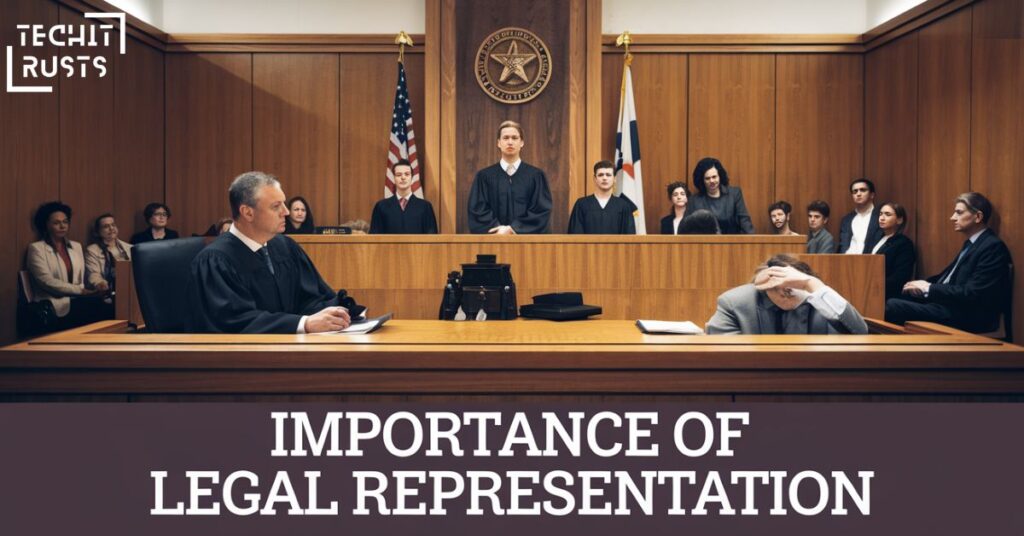
An experienced asbestos attorney can help victims build a strong case, negotiate with defendants, and ensure they receive fair compensation.
Why You Need an Asbestos Attorney
An experienced attorney can:
- Help gather the necessary evidence.
- Navigate the complexities of asbestos litigation.
- File claims with asbestos trust funds.
- Maximize the compensation available to victims.
Quote from an Asbestos Attorney:
“Having an attorney who understands the intricacies of asbestos law can make all the difference in the outcome of your case.”
Frequently Asked Questions
What are the symptoms of asbestos-related illnesses?
Symptoms of asbestos-related illnesses often appear years after exposure. Common symptoms include a persistent cough, chest pain, and shortness of breath. Other signs are fatigue, weight loss, and difficulty swallowing.
How long do I have to file an asbestos lawsuit in Lakewood?
In Lakewood, the time limit for filing an asbestos lawsuit typically follows Ohio’s statute of limitations. You usually have two years from the date of diagnosis or discovery of the illness to file a claim. However, it’s best to consult with an attorney quickly, as time limits may vary based on your specific case details.
Can family members of asbestos victims file a lawsuit?
Yes, family members can file a lawsuit if a loved one died from asbestos exposure. They may file a wrongful death claim for expenses and emotional losses. This helps seek compensation for the impact on their lives.
What types of compensation can I receive from an asbestos lawsuit?
Compensation from an asbestos lawsuit can cover medical expenses, lost wages, and pain and suffering. You may also receive funds for ongoing treatment and emotional distress. In some cases, punitive damages are awarded as well.
What if I can’t remember where I was exposed to asbestos?
If you can’t remember where you were exposed to asbestos, an attorney can help investigate your work and living history. They may locate potential sources of exposure based on your job or environment. This can strengthen your case and identify liable parties.
Conclusion
Asbestos exposure remains a serious health risk in Lakewood, particularly for those who have worked in high-risk occupations or lived in older buildings. Understanding your legal rights as an asbestos victim and seeking the right compensation can help cover medical expenses, lost wages, and emotional suffering.
If you or a loved one has been affected by asbestos-related illnesses, it’s essential to act quickly and consult with an experienced asbestos attorney.
>>>Read Also: Lebanon Mesothelioma Legal Questions: Know Your Rights And Legal Options

Ashi is the site admin for “techitrusts.com” and specializes in writing within the journal category. If you need more detailed information about his background or work, feel free to ask!